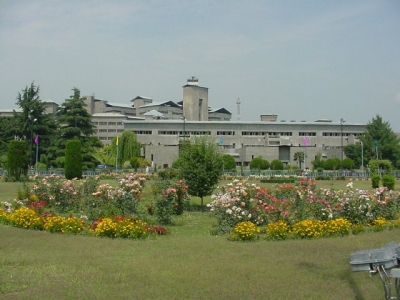Syed Iliyas Ali Rizvi
Eleven out of 12 warmest years were recorded during 1995–2006, states a report by IPCC (Intergovernmental panel on Climate Change). The report projects an increase of 1.8 to 4 degrees Celsius in average global temperature by end of the century.
In Kashmir, the case is no different. The effects of late snow are harsh. Srinagar received less than 10 mm rainfall in January in past few years as against the normal of almost 57 mm. A warm Chilaikalan in January may be responsible for pushing up the combined winter temperature and result in the early flowering of many plants.The glaciers are melting at an alarming rate. The water table in the valley has gone down considerable which will have serious consequences for agriculture.
The valley has been experiencing the changing patterns in temperature and precipitation for the last few years. The droughts and the unseasonal rainfall have posed a threat to crop maturity.
Growing evidences suggest that the climate change is having a profound effect on the human health in Kashmir. Excessive rainfall and high humidity has enhanced the mosquito breeding. This may lead to the ‘temperature related infections’ and water borne diseases like malaria, jaundice, cholera etc.
Climate Change and Food Patterns in Kashmir.
The crop productivity is influenced by Base line climate. For rice, a temperature increase of 2 to 6 degrees will reduce the yields.
EXAMPLE: The areas in the upper Budgam district show the changing agricultural patterns, from traditional varieties to new ones. For example, there has been the replacement of the famous local variety “Mushka Boudji”. There are only few pockets where the variety is presently cultivated. “Riye” (the breakage of the grains) due to less availabilities of timely rainfall, directly affects the overall production of the main crop.
While the direct impact on agriculture will be felt through changes in production systems, the indirect impact will be felt by consumers through inflation. Agriculture requires precise rainfall. Ploughing, planting, transplanting of crops requires certain amount of minimum rain at particular time. Total rainfall is a misleading indicator. This cycle of rainfall – periodicity and intensity determines the fate of millions of farmers. And this cycle is changing due to climate change.
Newspapers here have been reporting heavy crop loss – walnut, almond, and saffron crops. Dry-land agriculture is the most hit due to the climate change.Climate change is altering the distribution, incidence and intensity of pests and diseases. All the climate parameters – rainfall, soil moisture, temperature, CO2 concentration, all affect the “pest dynamics” in a cropping system. Any shift in the pattern is likely to influence the insect behaviour more than the plants and animals.
Boosting food security
1. Designing crops for the warm Kashmir
2. Improve productivity without associated ecological harm.
3. The water storage systems have to be decentralized to a sub basin level. Need to trap the “Excess Water” from floods, heavy snow is must. One of the ways is to create surface reservoirs. Reuse of waste water for cultivation purposes will save 40 percent of reserved water.
4. Need to introduce awareness programs at all levels.
(The writer is a climate scientist.)















